A travelling puppet theatre, based on medieval examples. Quick to set up and take down and just large enough for two players.
I grew up watching puppet shows and had wanted to play with medieval puppets for many years. Whenever we visited, my Austrian grandfather would put on a puppet show with his collection of hand-carved puppets, using a board and cloth across a doorway as an instant stage.
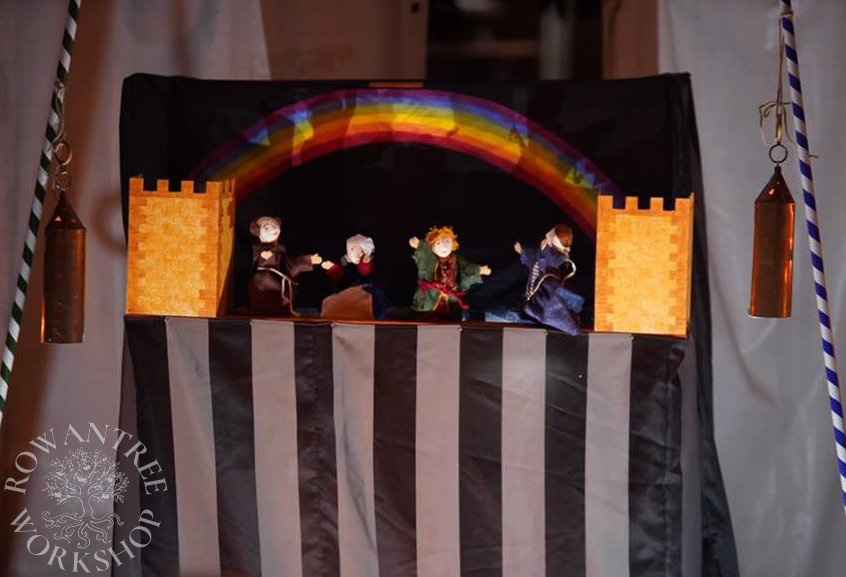
The opportunity to have my own puppets came in 2011, when we were asked to provide some medieval fairground entertainment. I did some research on medieval puppetry, and we built a puppet theatre and an initial cast of hand-puppets. My husband wrote a script, and we played it to the delight of all.
Research and Design
For the first puppet play, we made a quick-and-dirty frame for the booth. When it became clear we would be doing this again, we needed something better. I wanted to make a theatre based on medieval sources, but it also had to be quick to set up and take down, and easy to store.
While marionettes had permanent theatres, this was not to case for glove puppets. Puppet shows were presented in these temporary booths in hired rooms at fairs, inns and on busy street corners (Speaight 1955).
The earliest images of puppet theatres appear in an illuminated copy of Romance of Alexander c1400 and now in the Bodleian Library (MS. Bodl. 264).


The first illustration shows three young women watching a puppet show in a temporary booth. The booth has a pair of crenellated towers on the sides of the stage, and a rainbow arch over the top. A draped cloth covers the base of the theatre.
The second miniature shows four men watching a show in a very similar puppet booth. In this case, two soldier puppets are hitting each other with swords and two more are looking on, which implies that there are two puppet controllers to manipulate four puppets.
Speaight writes:
Now, the name for this kind of glove-puppet booth is in Italian castello, in Spanish castillo, and in French castellet, meaning a castle, and it is reasonable to suppose that these portable booths, the most suitable type of theatre for a travelling showman, were regularly made in the likeness of a castle, with ramparts and battlements above which the puppets could very naturally appear from the waist upward.
The History of the English Puppet Theatre (Speaight, 1955, p31)
There is no information about what the frame looked like, so I turned to other sources. There is a wonderful illumination of A Flemish City in the Chronicles of Charlemagne (Jean le Tavernier c1460) which shows a woman in a portable market stall.
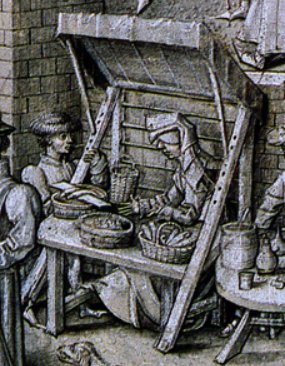
Turning the frame around gave me a simple support for the puppet theatre, although with a rectangular top rather than the rounded one of the illuminations.
Construction
I made the legs of the frame out of standard timber (19mm x ) and the horizontals out of 19mm dowel. The whole frame pins together with small brass pins, attached to the frame the leather thongs. The stage was a piece of skirting board and pegs to the arms with two dowels each side for stability. The tray to hold the script is 3-ply, with a small ledge at the base. It is slung under the stage with cords and hooks.
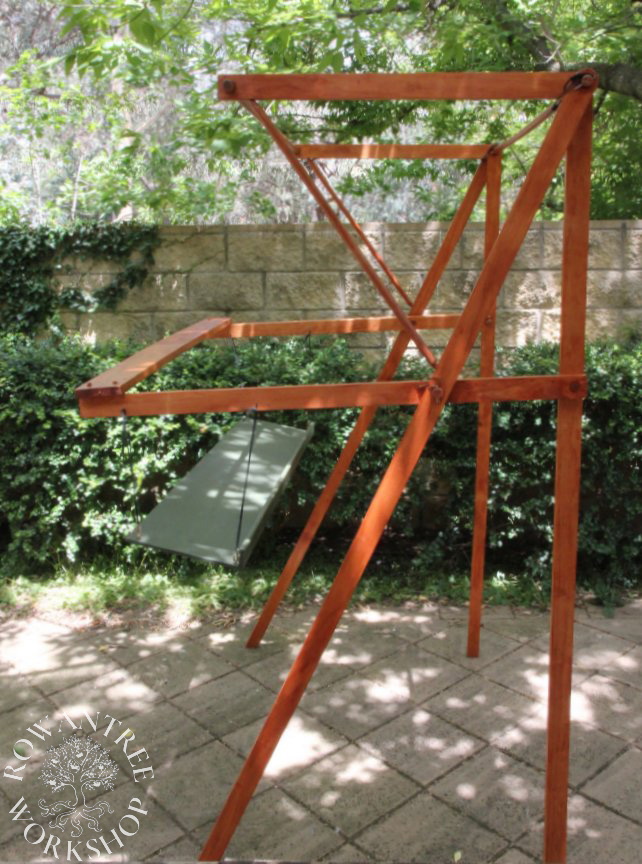
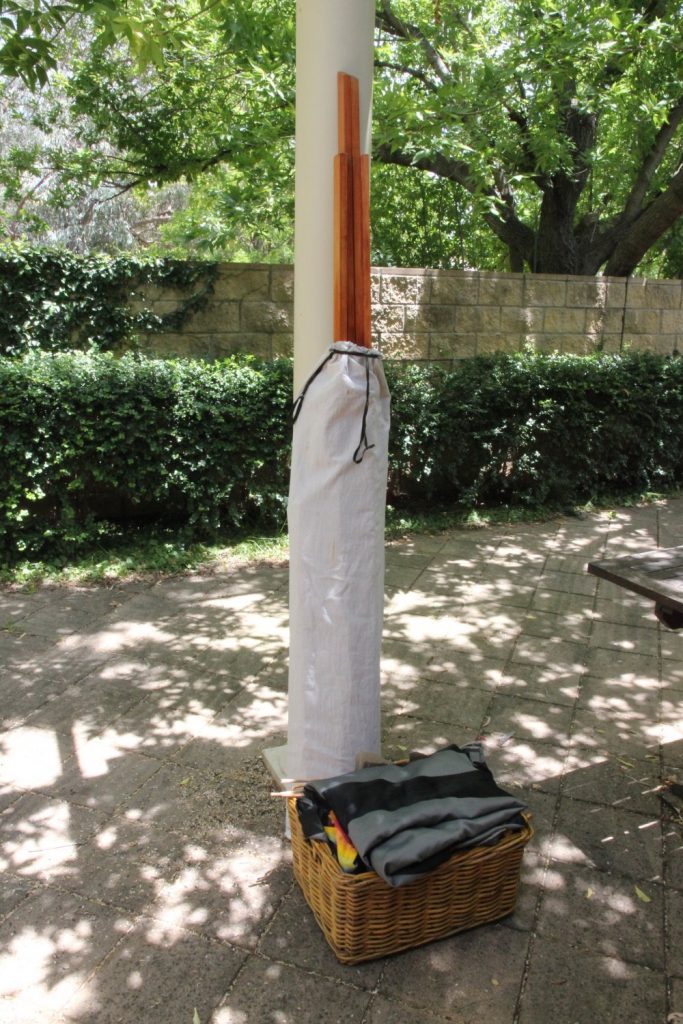
The manuscript images show a plain cloth draped under the stage, which hides the performers, and a backdrop behind the stage, under the rainbow arch.
I have used a striped synthetic fabric which deals well with wet grass and mud and evokes ‘puppets’ (actually a later fashion). It has eyelets around the top, which hang on small brass nails around the stage. The cloth also ties to the back legs to reduce issues with wind.
We need to see to perform the plays, so the backdrop is made of fine black cotton, with a painted rainbow sewn on. The top of the cover is white to let in extra light during daylight performances.


The castles at the sides frame the stage and act as towers, houses etc as required. They have hollow backs, so the puppets fit in easily. As with the rest of the theatre, they need to pack flat for transport. I made them from thin plywood, with leather hinges and clips at the base to attach them to the stage.
Other key props include painted trees, banners, etc which hang on the castles to change the scenes.
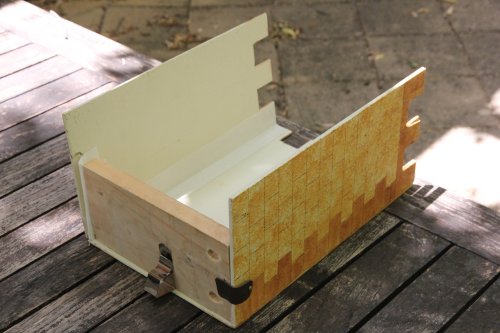
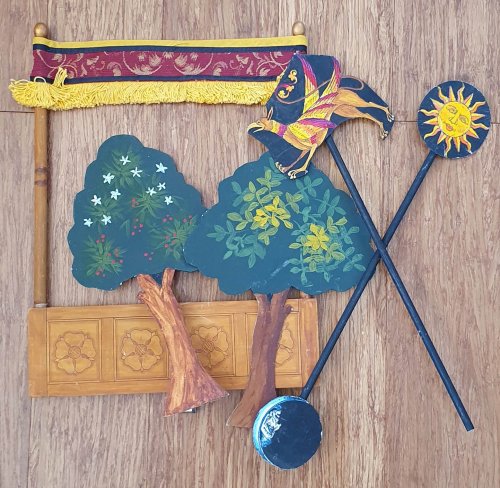
The booth works well, is quick to take down after a performance and packs down to a small bundle. We have used it performances in fields, tents and indoors.
In the middle ages, puppet shows were performed at fairs and the like – in daylight, where it is easy for both performers and audience to see.
We often have to perform at night, so we need extra light inside and out. For authenticity, we tried candle lanterns inside, but the fire risk was too high, so we now use small LED lights attached under the stage, over the script. To light the stage, we use a couple of our copper lanterns hung from our banner poles.

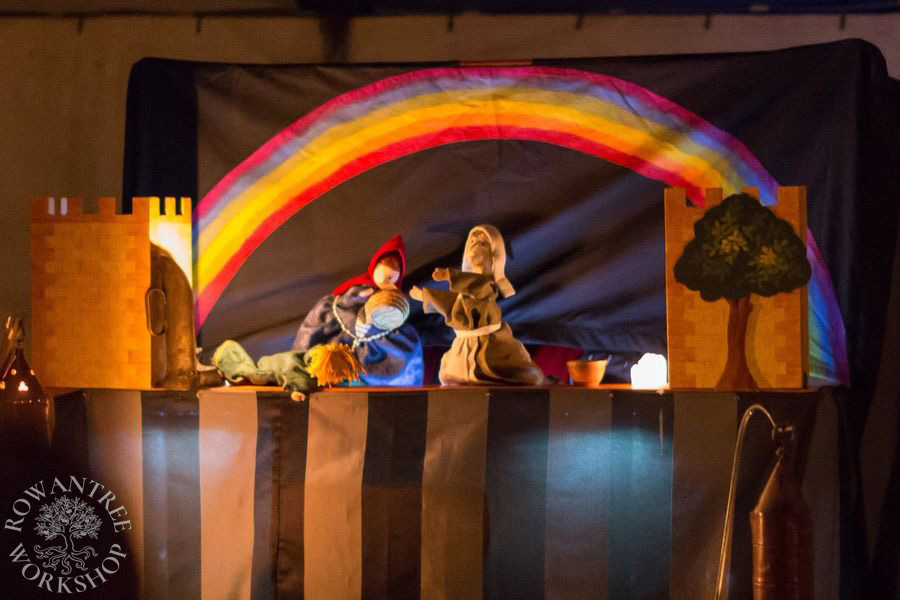
Our largest audience was an unforgettable performance of our play The Magna Carta, written for the 800th anniversary of the Magna Carta and performed at the Museum of Australian Democracy in 2015. We did a show every 2 hours over the weekend event, to a packed house!


